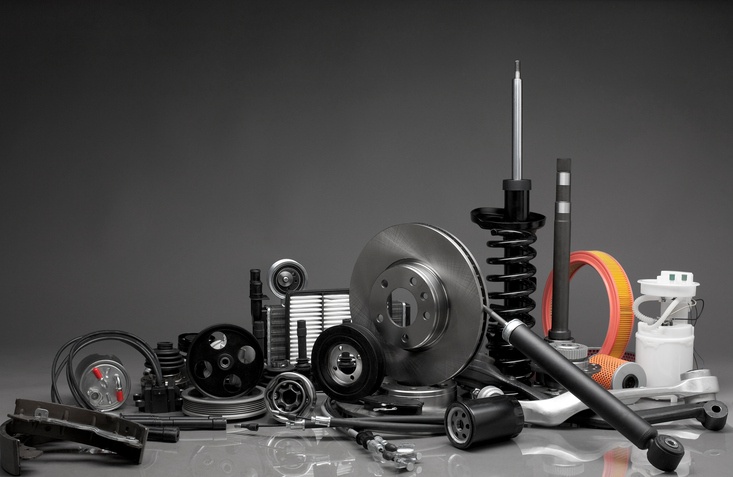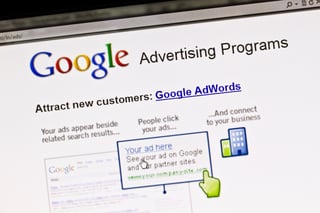
While the new and used car sales departments stay focused on “getting tail lights across the curb,” the possibility of increasing parts sales at auto dealerships does not go unnoticed by 21st-century franchise administrators who look to generate more revenue from every channel.
Part one of this series reviewed the ways that dealer management systems (DMS) can be used to increase parts sales with the strategic application of pricing, customer relationship managers (CRM), and key performance indicators (KPIs).
Recapping essential details from that article, CRM are named suites within DMS whereas pricing and KPIs are monitored via DMS suites such as accounting, service, sales and e-commerce.
This second installment covers online sales, merchandising and customer service.
Online Sales
Cyberspace may not be “the final frontier,” but it certainly is “everywhere you want to be.” The obvious — the potential for selling parts to customers around the world — should be enough to get motivated, but be aware that getting started requires an investment in time, labor and technology. The good news is that there are  millions of providers who help businesses establish and service virtual storefronts.
millions of providers who help businesses establish and service virtual storefronts.
The bad news is that competition is fierce because retail giants such as Amazon and Walmart sell auto parts alongside the expected online portals of AutoZone, Pep Boys and O’Reilly Auto.
As with any retail venture, demand is enhanced by offering a unique combination of product availability, price, fulfillment, product knowledge and customer service. Thus, excelling at all of the above is needed to increase parts sales at auto dealerships.
Framework
Experts recommend using web providers that specialize in auto parts ecommerce — some focus on OEM items while others deal with aftermarket parts.
After educating readers on the pros and cons of selling via eBay and Amazon, writer Jason Lancaster discusses how to “launch your own national parts ecommerce website” in a comprehensive presentation on Driving Sales where he links an article listing ecommerce providers.

Two important takeaways per the article:
- See what other eBay retailers are selling parts for and match the lowest one available.
- While eBay customers are used to paying shipping and handling fees — a profit center for many retailers — Amazon buyers would rather pay above list price than pay for shipping.
Lancaster recommends developing “an understanding of the marketplace in terms of pricing and profitability, a parts ecommerce platform, and a marketing plan and strategy.”
Promoting Online Parts Sales at Auto Dealerships
Online presence is enhanced with the help of search engine optimization (SEO), Google AdWords campaigns (i.e. pay-per-click services), and strategic social media plugs.
 SEO is not overly complicated, but it does have guidelines such as those established by two of today’s leading authorities: Yoast and Hubspot. Learn one or the other, or both for the best results.
SEO is not overly complicated, but it does have guidelines such as those established by two of today’s leading authorities: Yoast and Hubspot. Learn one or the other, or both for the best results.
Google AdWords is the 21st Century rendition of paid advertising, but is considerably more effective because the target markets are customized. Case in point: conduct a Google search for “oem auto parts” to see immediate results and note the local angle created by geo-mapping technology.
Social media is a marketing channel that can be used or abused depending on the practitioner. There are hundreds of millions of web pages containing recommendations (conduct a search for “social media marketing”), but here is a tip worth considering:
Do not make frequent attempts at hawking auto parts on social media because the operative word is “social.” Rather, wait for opportune times to market items that may resonate with viewers. For example, the seasonal accessories mentioned in the next section would be a good candidate for social media promotion. Finally, Facebook Ads is a marketing channel within a social channel that should be considered.
Merchandising
Parts sales at auto dealerships can be greatly improved by coordinating efforts in all channels: the service department (repair orders), online sales (virtual storefront), wholesale customers (independent repair, body and  transmission shops) and over-the-counter sales. For example, walkarounds by service technicians with customers in tow can generate additional parts sales because service orders generally require the removal and replacement (R/R) of OEM parts.
transmission shops) and over-the-counter sales. For example, walkarounds by service technicians with customers in tow can generate additional parts sales because service orders generally require the removal and replacement (R/R) of OEM parts.
In the merchandising space, writer Ian Linton presents a handful of useful tips in his article “How to Increase the Profits of a Dealership Parts Department.” Three items are outstanding:
- Display oil and filters, servicing kits and fast-fit parts such as wiper blades, batteries and lighting components. He recommends “branded products in consumer packaging and display[ing] them in a separate area of the parts department.”
- “Stock seasonal accessories such as winter driving kits or holiday kits at prices that earn good margins.”
- Provide fleet operators, independent service technicians and small service outlets with a reliable wholesale parts service because “managing their parts requirements reduces their administrative burden.” (He also recommends “regular phone calls to wholesale customers to collect orders and advise them of upcoming deliveries” as well as “promotions and incentive campaigns to encourage them to increase sales.”)
And finally, one expert suggests appointing a “dedicated accessories manager” who can focus on marketing and merchandising across the department lines of sales, F&I, parts and service.
Customer Service
 The healthcare industry has a KPI called the first pass resolution rate (aka “clean claim rate”) to define the rate that institutions successfully resolve patient claims in a single attempt. The average success rate is 75 – 85 percent. Those figures may work in the realm of complicated hospital claims, but won’t cut it in retail where, for example, eBay merchants strive for customer satisfaction ratings of 97 percent or higher.
The healthcare industry has a KPI called the first pass resolution rate (aka “clean claim rate”) to define the rate that institutions successfully resolve patient claims in a single attempt. The average success rate is 75 – 85 percent. Those figures may work in the realm of complicated hospital claims, but won’t cut it in retail where, for example, eBay merchants strive for customer satisfaction ratings of 97 percent or higher.
Other benchmarks should include real-time human phone support, short wait times, and returning incoming communications via voice mail, email, webmail or text as soon as possible.
Many online businesses are turning to customer satisfaction surveys to monitor the quality of customer service and show customers that they matter. Statistics indicate surveys are good for business while one study revealed that “86 percent of buyers will pay more for a better customer experience.”
Furthermore, the Walker study, “Customers 2020: The Future of B-to-B Customer Experience,” makes a strong case for improving the experience of B2B customers and its impact on wholesale auto parts sales.
Finally, all of these measures point to the need for generating customer retention and a consumer-centric approach in the parts department. As the legendary Lee Iacocca once said, “Business, after all, is nothing more than a bunch of human relationships.”
Payment Solutions
C.A.R.S., CrossCheck's Auto Industry RDC Solution, is a perfect fit for accepting guarantee payments from wholesale customers like auto repair, body and transmission shops because it contains the Check on Delivery (COD) premium.
Checks are approved over the phone before delivery because COD is used in conjunction with the Remote Deposit Capture and Check Guarantee components of C.A.R.S. Download our free guide to learn more.



